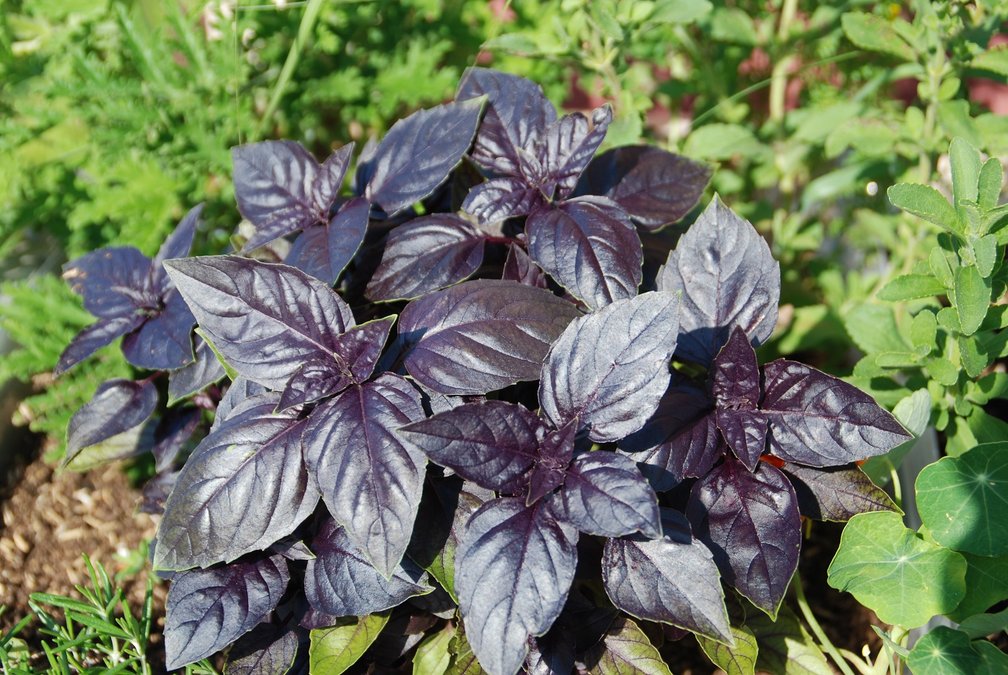Fresh on your pizza, added to your favorite Italian and Southeastern Asian dishes, or made into pesto, it’s not surprising basil is often called the king of herbs.
Look for opportunities to include basil in gardens, containers, and ornamental plantings. Purple varieties add color and combine nicely with other flowers and vegetables. Everleaf Emerald Towers is a very tall and productive plant that adds vertical interest to container and in-ground gardens.
Always wait for the air and soil to warm before moving basil into the garden. Cold air and soil can stunt or damage the plants and increase the risk of downy mildew. You may even see blackened leaves and other damage when temperatures drop to 50 degrees.
Protect tender plants in spring and extend the harvest in fall with the help of floating row covers. These spun fabrics trap heat around the plants while allowing air, light, and water through. Lightweight row covers can be used throughout the summer to protect the plants from Japanese beetles.
Keep plants healthy and help reduce the risk of downy mildew disease by growing basil in sunny locations with plenty of room to reach their mature size. The extra space allows sunlight to reach all parts of the plants, and the added air movement quickly dries the leaves.
Avoid overhead irrigation whenever possible. Instead, use soaker hoses, drip irrigation, or a watering wand to apply the water directly to the soil.
Red leaf, Thai, and lemon-flavored basil varieties are less susceptible to downy mildew. Relatively new sweet basil varieties such as Devotion DMR, Obsession DMR, Passion DMR, Thunderstruck DMR, Prospera Compact DMR, and Prospera are downy mildew resistant.
Watch for slugs that feed at night, eating large, ragged holes in the leaves. Trap them with shallow containers of beer sunk into the ground or use a slug beer trap with a built-in cover. The slugs are attracted to the fermenting yeast, crawl inside, and die.
Unlike slugs, the Japanese beetles feed and mate in broad daylight. They devour large portions of the leaves, leaving only the veins behind.
If you see circular clear or black spots on the leaves the four-lined plant bug is the culprit. The dead tissue may eventually fall out, resulting in small holes.
Manage Japanese beetles and plant bugs by knocking them into a can of soapy water or treating the plants with an organic insecticide labeled for controlling these pests on basil. Always read and follow all label directions for safe and effective control.
Harvest basil as needed. Regular harvesting will increase productivity and ensure the best flavor. Remove flower buds as soon as they appear to maintain foliage flavor. But don’t worry if a few blossoms appear, these are also edible and a favorite of beneficial insects.
Plan to grow and harvest extra basil to make pesto or flavored vinegar. Make plenty to enjoy throughout the year and share with family and friends.
Melinda Myers is the author of numerous books, including Small Space Gardening. Myers web site is www.MelindaMyers.com.





